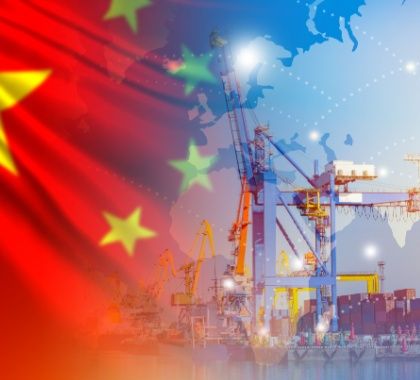How Much Will Section 301 Tariffs on Electronic Component Imports from China Cost?

The clock is ticking towards a pivotal moment for importers with the looming May 31, 2024, expiration of selected Section 301 tariff exclusions. These exemptions have been a lifeline for over 300 product categories, extending a financial reprieve to critical segments, including essential medical supplies aimed at combating the COVID-19 pandemic. Unless the United States Trade Representative (USTR) issues yet another extension (see below), companies must prepare to pay from 7.5% to 25% more for a wide range of components starting on June 1, 2024.
History of Section 301 Tariffs and Exclusions
The enactment of Section 301 tariffs stands as a landmark in the unfolding narrative of US-China trade relations, with a resounding impact on US electronics manufacturers. Section 301 tariffs are integral to the Trade Act of 1974 and empower the U.S. to impose trade sanctions on countries that violate trade agreements or engage in practices harmful to U.S. commerce. Historically, these tariffs have been leveraged to address a range of unfair trade practices and have fundamentally recalibrated the cost dynamics of importing electronic components from China into the United States.
The introduction of these tariffs was rooted in concerns over intellectual property practices and aimed to incentivize fairer trade behaviors. Yet, the broad application of tariffs across various sectors, including electronics, has sparked a complex debate about the balance between protecting domestic interests and managing international trade relationships.
Impact of Past Section 301 Tariffs
The Consumer Technology Association (CTA) spotlights the economic strain these tariffs inflicted, with a report showing the tech sector alone paid an estimated additional $32 billion in tariffs from mid-2018 to the close of 2021. This financial burden spans a variety of tech products, from ubiquitous connected devices to sophisticated computing systems, and ignited widespread advocacy for tariff removal to help reduce inflation and support American innovation and economic vigor.

“It’s clear that the tariffs have not been effective in dealing with China and are instead hurting U.S. businesses and consumers. With rising prices across all sectors of our economy, removing tariffs would mitigate rampant and harmful inflation and lower costs for Americans.” – Ed Brzytwa, Vice President of International Trade, CTA
How We Got Here
The Office of the United States Trade Representative introduced the Section 301 exclusion process alongside the four tranches of Section 301 tariffs in 2018 and 2019. The process allowed companies to apply for certain products to be excluded from the tariffs if certain conditions were met, such as whether the product was only available from China and if the tariffs would result in severe economic harm.
These exclusions, 549 in total, gradually expired by 2021 after several extensions (except for some related to COVID-19, which USTR moved to a separate exclusion list). In a March 28, 2022, Federal Register notice, 352 of the 549 expired exclusions were retroactively reinstated, effective October 12, 2021. This new list of exclusions was initially scheduled to expire on December 31, 2022, but several extensions were issued, pushing the expiration date to the end of last year (December 31, 2023).

The lack of advance warning for these exclusion extensions created challenges for companies planning future shipments. On December 11, 2023, a coalition of industry associations, Americans for Free Trade, called on USTR to issue a decision on the Section 301 exclusions as quickly as possible so companies could better plan orders. On December 26, 2023, the Office of the USTR announced another extension for the exclusions scheduled to expire on December 31, 2023, to May 31, 2024, while also opening the floor for public commentary. While this was yet another temporary extension, it indicates a future fraught with financial uncertainties for importers and manufacturers, as the USTR also signaled it is considering extending some exclusions past May 2024.
Impact of Expiring Tariff Exclusions
The scheduled expiration of specific tariff exclusions on May 31, 2024, presents a daunting fiscal challenge for importers who must prepare for higher costs for a vast array of electronic components. The anticipation surrounding the potential expiration of these exclusions has galvanized businesses into seeking clarity and preparing for various outcomes.
Industry Responses and Strategic Adaptations
In response to these shifting trade winds, industry giants and small businesses alike have been compelled to reevaluate their supply chains and sourcing strategies. For example, companies such as Apple, which relies heavily on Chinese-manufactured components for its range of consumer electronics, and Tesla, whose advanced automotive electronics are integral to its vehicles, face significant challenges in adapting to these tariff changes.
The concerted push by Americans for Free Trade for expedited clarity on Section 301 exclusions reflects a collective industry desire for predictable and stable tariff policies to underpin confident business planning and investment.
Analysis of Section 301 Tariff Cost Impacts
Grasping the full financial impact of the expiring tariff exclusions requires enterprises to thoroughly examine their supply chain and inventory for components previously shielded by these exemptions. Industries reliant on semiconductors, PCBs and other critical electronic parts are bracing for higher costs, impacting sectors as diverse as automotive, consumer electronics and medical devices. Managing these changes necessitates comprehensive forecasting and financial planning – including detailed cost analyses and scenario planning – to effectively navigate the evolving landscape and forecast new costs.

By understanding the specific components and devices a company relies upon that are likely to be affected, businesses can formulate plans to mitigate the financial strain. This can involve exploring partnerships with alternative suppliers or shifting manufacturing strategies to align with the evolving tariff landscape.
Leveraging expertise from trade specialists and customs brokers can help you navigate the regulatory maze. A tariff simulator, such as this one from the World Bank, can prove helpful, and the USTR offers support, such as information on How to Navigate the Section 301 Tariff Process.
Mitigation Strategies
As businesses contend with the ramifications of these tariffs, a multifaceted approach to mitigation has emerged as a necessity. Strategies range from diversifying supply sources to innovative product reengineering to minimizing reliance on tariff-affected components. Furthermore, the USTR's public commentary process presents an opportunity for businesses to advocate for their interests, utilizing impact assessments and forecasts to argue for the further extension of critical exclusions.
Looking Ahead
The implications of Section 301 tariffs demand a strategic response from businesses affected by these changes. By understanding the detailed impacts on their operations and exploring avenues for mitigation, companies can turn potential obstacles into a blueprint for future resilience. Engaging in the USTR's public commentary process and staying connected with industry associations will also be crucial in advocating for favorable trade conditions and staying ahead of further regulatory shifts.








